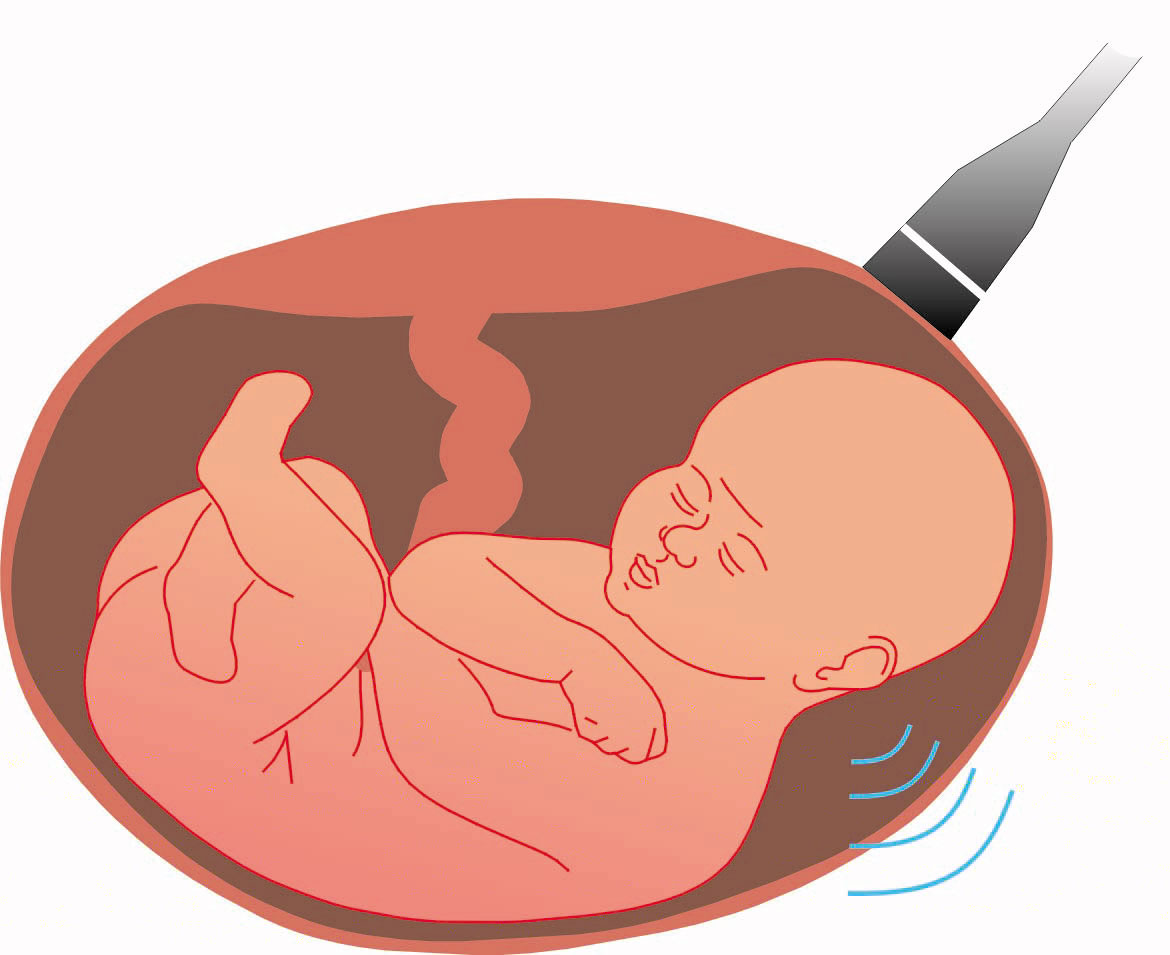Mostafa Fatemi- fatemi.mostafa@mayo.edu
Paul L. Ogburn
James F. Greenleaf
Mayo Foundation
Rochester, MN 55905
Popular version of paper 1pBB6
Presented Monday
Afternoon, December 3, 2001
142nd ASA Meeting, Fort Lauderdale, FL
Ultrasound, by definition, is sound that lies beyond the range of human hearing. However, we have found that ultrasound machines can make a lot of noise that a fetus can hear.
Ultrasound imaging systems produce ultrasound as sequences of short-time, high-energy bursts, which we call "pulse trains." These pulse trains are transmitted into the body. When these pulses hit internal organs, they produce a series of momentary "tapping forces" on the organ. If you think of each ultrasound pulse as a raindrop, the above phenomenon is similar to the tapping forces of raindrops on a roof. Repeated tapping of ultrasound pulses vibrates the organ. The frequency (or the tone) of this vibration is determined by the number of pulses transmitted per second. Such vibrations are normally too weak for the patient to feel. However, when the ultrasound is pointed to the head of the fetus, it directly vibrates the fetus's sensitive hearing structure. The fetus senses these vibrations as a loud noise. This effect is similar to listening to rain by placing your ears in contact with the roof, which sounds a lot louder than listening to the sound of rain from a distance. This explains why the sound in the womb can sound loud to the fetus but not to the mother.
The loudness of sound varies at different frequencies. The sound generated by ultrasound imaging systems is mainly at the frequency of the pulse repetition rate, which is a few thousand hertz for most ultrasound systems. This is equivalent to the sound of the high notes on a piano. This sound may also include frequencies that are multiples of the main frequency. The sound may contain other frequencies as well; that is, it may sound like a chord.
It should be noted that the sound in the uterus is the result of very localized vibrations. At the point where the ultrasound is focused these vibrations may be equivalent to a 100-120dB (decibel) sound, which is very loud for a person hearing sound through the air. A 100-120 dB sound in air is similar to the sound level of an approaching train. But the sound level decreases rapidly away from the region excited by the ultrasound pulses. This is why the ultrasound-stimulated sound produced during a fetal exam is not audible by others including the mother.

Our research does not suggest that ultrasound from an ultrasound imaging system introduces a risk to the fetus. However, the study shows that ultrasound can stimulate the fetus and as a result, fetal activity and heart rate increase. We think this research would help physicians to understand why the fetal activity increases during an ultrasound examination. Increased fetal activity is not a problem in most cases; in some cases, however, fetal stimulation may be undesirable. Understanding this effect would help the physician to make better decisions when examining a fetus. Our research may also be useful to the research community. For years, research scientists have studied fetal activities through observation by ultrasound imaging. Our results suggest that ultrasound imaging systems cannot be considered as innocent or passive observation tools for fetal activities, because such devices can produce unintentional stimulation of the fetus and affect the experiment or test.